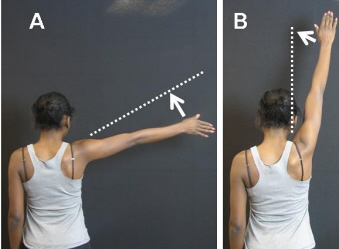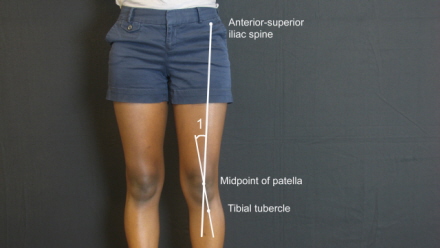Sample Questions
The sample questions that follow are illustrative of the type found on the Physical Therapist and Physical Therapist Assistant examinations.
Physical Therapist Examination
1. After sitting at a computer station for 2-3 hours, an individual reports experiencing a sharp, localized pain in the left arm. When asked to show the location of the pain, the individual points to the area of the insertion of the deltoid. The pain disappears when the individual stands up and walks around briefly. Which of the following interventions is MOST likely to correct the problem?
a. Isometric strengthening of the deltoid
b. Lumbar extension exercises in prone position
c.Instruction in correct postural alignment in sitting position
d. Instruction in shoulder active range of motion exercises
2. A patient who has a medullary-level vascular lesion has increased vagal nerve activity. Which of the following descriptions BEST represents the cardiovascular effects that occur when the patient transitions from supine to standing position?
a. Rise in blood pressure and no change in heart rate
b. Drop in blood pressure and no change in heart rate
c. Rise in blood pressure and an increase in heart rate
d. Drop in blood pressure and an increase in heart rate
3. A patient has used crutches with a partial weight-bearing toe touch gait for the past 3 months. When progressed to full weight-bearing, the patient is unable to demonstrate a heel-toe gait sequence with the involved extremity. Which of the following disorders is the MOST likely origin of the gait abnormality?
a. Plantar fasciitis
b. Fibular (peroneal) nerve palsy
c. Heel cord tightness
d. Hammertoe
4. While abducting the shoulder, the patient in the photograph denies pain while moving the arm through the range indicated in photograph A, but reports increasing pain severity as the arm moves into the range indicated by photograph B. Which of the following disorders is MOST likely present?
a. Acromioclavicular joint lesion
b. Subacromial bursitis
c. Infraspinatus tendinopathy
d. Partial tear of the supraspinatus

ANSWERS TO SAMPLE QUESTIONS: 1.c; 2.b; 3.c; 4.a
Physical Therapist Assistant Examination
1. During a physical therapy evaluation, a patient with a sprain of the deltoid ligament of the ankle reported pain with palpation of the affected area and with ankle motion that stressed the ligament. To determine any change in the patient’s pain level during subsequent treatment, a physical therapist assistant should palpate which of the following areas?
a. Anterior to the lateral malleolus while the patient’s ankle is passively everted
b. Inferior to the medial malleolus while the patient’s ankle is passively everted
c. Over the sinus tarsi while the patient’s ankle is passively inverted
d. Deep to the Achilles tendon while the patient’s ankle is passively dorsiflexed
2. Which of the following instructions would be MOST appropriate to give a patient who is learning pursed-lip breathing?
a. Exhale through pursed lips while contracting abdominal muscles
b. Exhale by blowing air out forcefully between pursed lips
c. Exhale by relaxing air out through pursed lips
d. Exhale in quick short puffs through pursed lips
3. A patient who has impaired kinesthesia who is performing active range of motion exercises of the upper extremities will MOST likely require which of the following supplemental interventions?
a. Visual cues while performing the exercises
b. Pain-relieving modalities prior to performing the exercises
c. Trunk stabilization while performing the exercises
d. Stretching prior to performing the exercises
4. If angle 1 in the photograph is greater than 20°, which of the following complications is the patient MOST likely to develop?
a. Patellofemoral tracking disorder
b. Genu recurvatum
c. Lateral collateral ligament sprain
d. Medial meniscal lesion

ANSWERS TO SAMPLE QUESTIONS: 1.b; 2.c; 3.a; 4.a
Return to Candidate Handbook